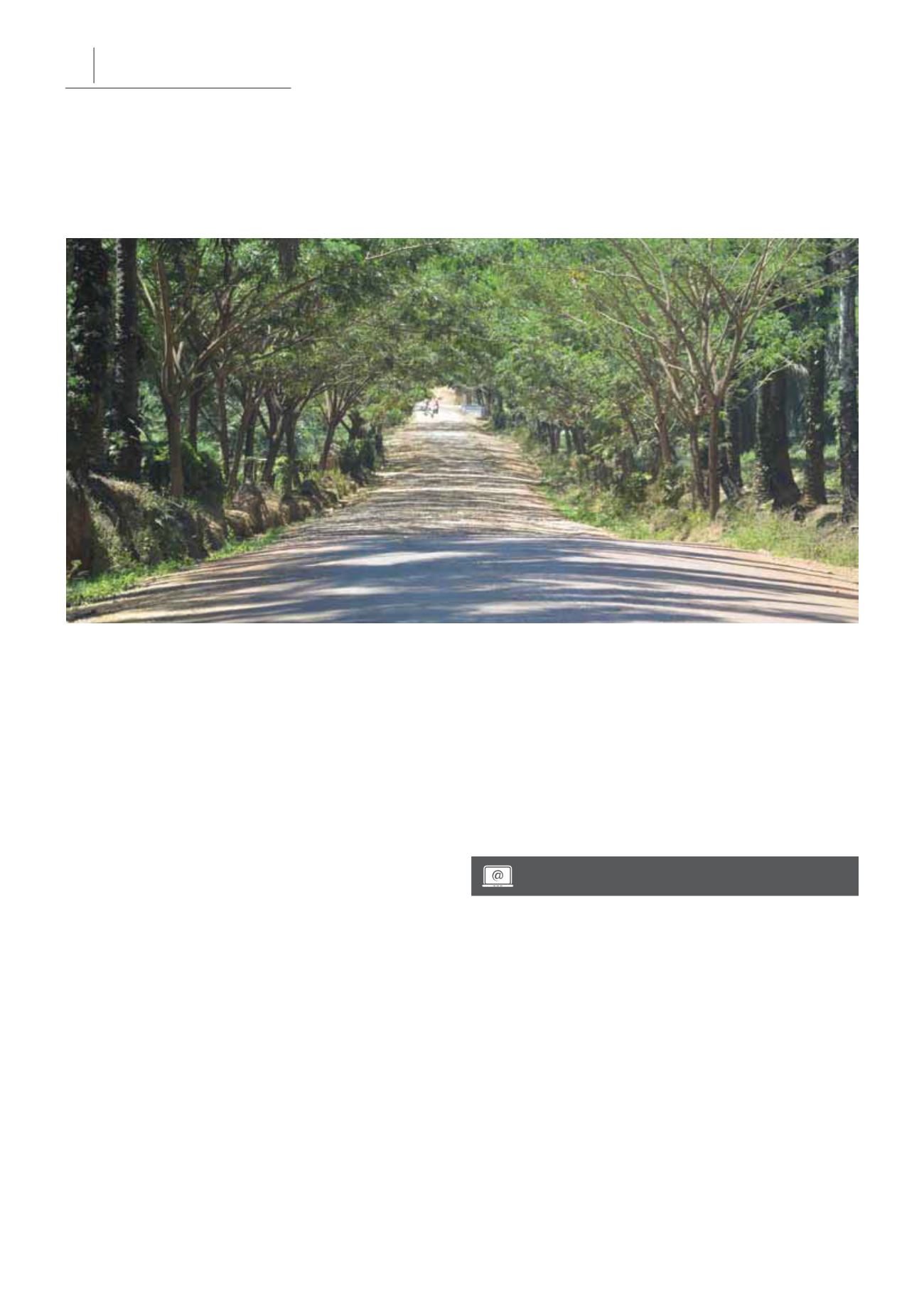
44
INDOFOOD AGRI RESOURCES LTD
SUSTAINABILITY REPORT 2014
MANAGEMENT OF HIGH
CONSERVATION VALUE AREAS
Since 2008, we have demarcated HCV areas in our plantations
in accordance with RSPO’s guidelines. The HCV areas
include riparian areas, reservoirs, bamboo gardens, swamps,
graveyards, and important heritage and cultural sites.
In 2014, we engaged RSPO
-
accredited assessors to evaluate
the HCV areas in all the oil palm estates. The HCV acreage
in Sumatra and Kalimantan are 4,225 hectares and 19,054
hectares respectively.
Following the identification of the HCV areas, we organised a
stakeholder meeting with delegates from both the government
and local community to validate the designated areas, and to
mark out these locations clearly on a map.
We restore the HCV areas by planting trees beneficial to the
local wildlife. All oil palm trees within 50 meters from the
large waterways were marked with white crosses. These trees
would no longer be treated with pesticides and fertilisers so
as to avoid contaminating the riparian areas. The HCV areas
in existing estates are constantly monitored and assessed. For
new plantations, the HCV identification will be done before the
land is cleared for farming.
HCV MONITORING AND PARTNERSHIPS
We communicate regularly with employees and local
communities living around our estates on the importance
of the HCV areas and the restriction of activities at these
locations. The protection of endangered species is one of the
topics covered during our discussions.
We have been training our estate teams to monitor the
HCV areas for biodiversity, river water quality and level of
disturbance caused by local villagers. Guidebooks for the
identification of local wildlife are provided to the estate teams.
The HCV areas on our estates are regularly monitored and
audited by our internal sustainability team.
We encourage the participation of the local communities in
protecting the wildlife in our estates and the HCV areas. We record
every wildlife species found on our estates, taking special notice
of those classified vulnerable and above on the International
Union for Conservation of Nature (IUCN) Red List of Threatened
Species, and the list of protected species under Indonesian
Regulation No. 7 of 1999 on the Preservation of Flora and Fauna.
See the overview of Red List or other national conservation
list species found on our estates, online content at
PEATLAND MANAGEMENT
While the Indonesian regulation still allows for planting on
peatlands that are less than three metres deep, we have
proactively prohibited all new planting on peatlands within the
Group regardless of peat depth since September 2013. For
existing developments that were planted on the peat before
this date, we have created water canals and ensured the water
level is maintained between 60 and 80 cm daily.


